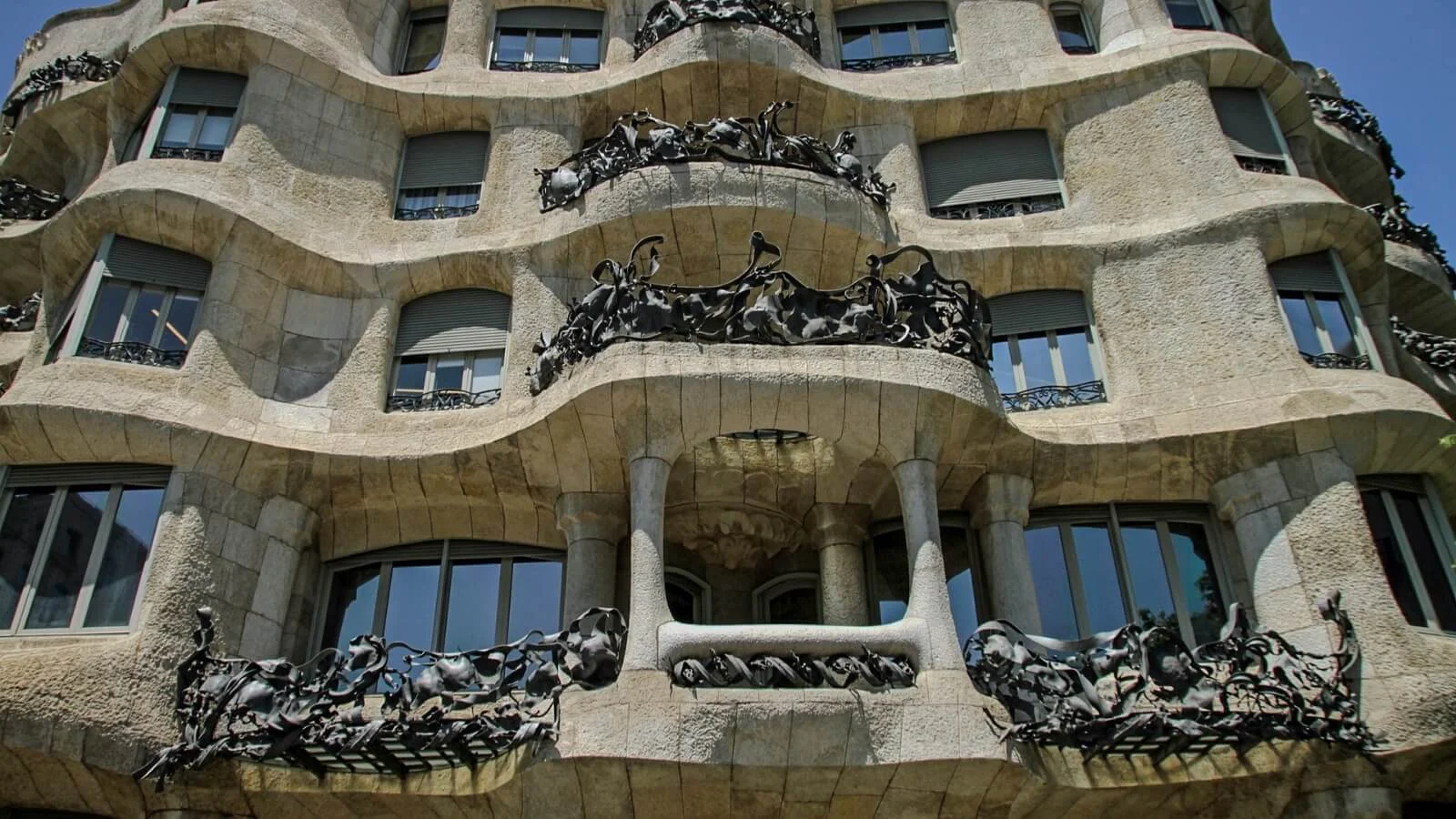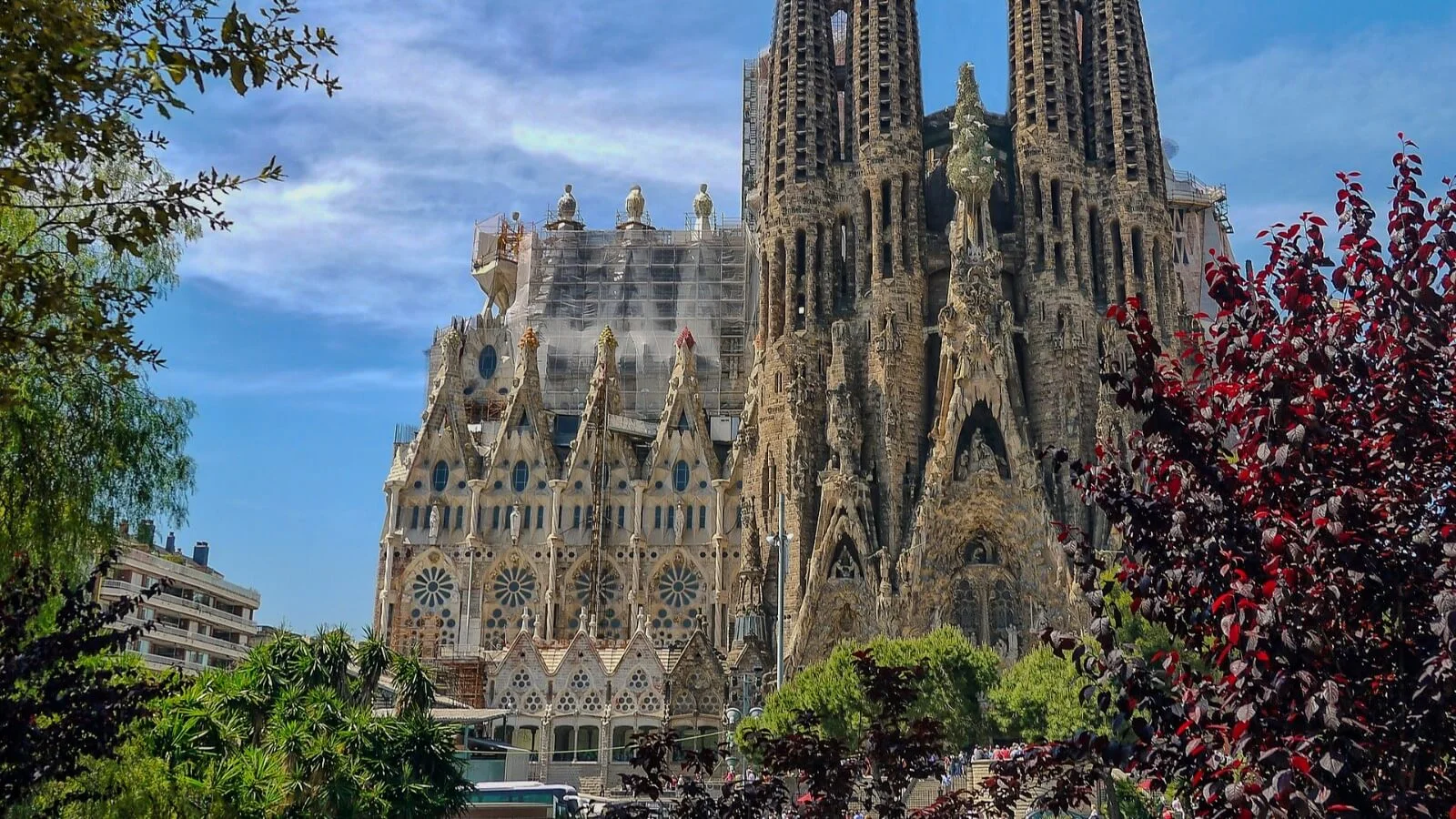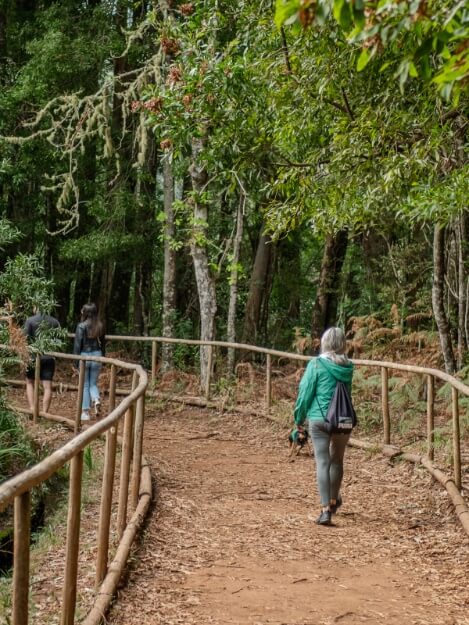Barcelona Gaudi Modernist Marvels with Expert Guide
5hrs approx.
Barcelona
Price from: 235.00 euros
- Discover the Striking Modernist Gems of Antoni Gaudi.
- Explore captivating blend of gardens and architectural wonders of Park Guell.
- Get to know the history of Barcelona´s Modernist Architecture.
- Enjoy a privately guided and driven art tour of Barcelona.
General Overview
- ID: EW3372
Introduction

Discover Barcelona´s Gaudi Marvels: Guided Exploration with Transportation
Welcome to the enchanting city of Barcelona, where your immersive journey into the architectural wonders of Antoni Gaudi begins. The day kicks off as you are picked up from your hotel, taking part in a memorable exploration, starting with the iconic Sagrada Familia Church. Admire the details and splendour of this masterpiece.
Next on the agenda we have more of Gaudi´s renowned masterpieces. Experience the unique charm of La Pedrera (Casa Milà) with an insightful tour of its interior, followed by an exterior view of the Casa Batllo. Admire the artistry of Casa Ametller and Casa Lleo Moreno from the outside, each contributing to the mosaic of Gaudi´s breathtaking art. A detailed exploration of La Pedrera (Casa Mila) from the inside promises to reveal its hidden treasures.
As your journey unfolds, enjoy a panoramic tour of Barcelona´s significant monuments, soaking in the city´s rich history and cultural heritage. The day ends with a visit to the magical Park Guell, a testament to Gaudi´s imaginative talent. After the visit to Park Guell, you will be then dropped off back at your hotel, marking the end of an unforgettable exploration of Barcelona´s Gaudi marvels.

Exploring Gaudí´s Legacy from the Sagrada Familia to the Most Iconic Monuments in Barcelona
- Sagrada Familia: Stands as one of the world-renowned works of the visionary genius of Antoni Gaudí, a Roman Catholic minor basilica in the heart of Barcelona, Spain. Starting its construction in 1882, this iconic masterpiece remains an ongoing work of art. The basilica´s unexpected presence in the urban landscape is marked by bold flying buttresses and uniquely twisted towers that loom majestically over the city. Sagrada Família is a timeless symbol of architectural innovation and a must-visit attraction in the heart of Catalonia´s capital.
- La Pedrera, Casa Mila: Casa Milà, popularly known as La Pedrera was built between 1906 and 1912. This iconic building, along with Park Guell and Palau Guell, earned a well-deserved place on the World Heritage Site List in 1984, showcasing its significance in the architectural landscape. The nickname "La Pedrera," meaning "stone quarry" in Catalan, is in honour of the building´s exterior, where stone takes centre stage in the intricate design of the façade and balconies. Gaudí´s innovative approach and the building´s unique aesthetics contribute to its status as one of the world´s most exceptional sites, seamlessly blending tradition and modernity.
- Casa Batllo: A striking architectural gem on Passeig de Gracia, Barcelona, showcases the brilliance of Antonio Gaudí and Josep Maria Jujol. Originally built in 1877 and renovated between 1904-1906, the building, locally named Casa dels ossos (House of Bones), boasts an organic, skeletal design with a mosaic facade of broken ceramic tiles. Casa Batlló stands as a vivid representation of Gaudi´s iconic Modernist style and enduring influence on Barcelona´s architecture.
- Casa Amatller: Originally built in 1875, it was transformed into the residence of chocolatier Antoni Amatller from 1898 to 1900. Preserved with remarkable authenticity, the house now serves as a historic museum, café, and the Amatller Institute for Hispanic Art. Open for scheduled tours, it offers a glimpse into the lifestyle of the Amatller family during the Modernisme era.
- Casa Lleo Morera: A jewel of modernist architecture by Lluís Domenech i Montaner on Passeig de Gracia, Barcelona, emerged from a 1902 commission by Francesca Morera. After she died in 1904, her son Albert Lleó i Morera continued the project, completed on March 10, 1905. As part of the "Block of Discord" with Casa Batlló and Casa Amatller, it´s the winner of Barcelona´s 1906 Artistic Buildings Competition. Described as a "miniature Palace of Catalan Music".
- Park Guell: Located on Carmel Hill in Barcelona, Spain, is a captivating blend of gardens and architectural wonders designed by Antoni Gaudí. Commissioned by Eusebi Güell, the park was built between 1900 and 1914, officially opening to the public in 1926. Recognized as a UNESCO World Heritage Site in 1984 under "Works of Antoni Gaudí," it displays the integration of nature and design, making it a must-visit destination that reflects the creative spirit of Barcelona.
Day by day itinerary
DAY 1:
BARCELONA
- Your Private English-Speaking Official Guide and Driver will pick you up from your hotel.
- Starting with a visit to the Sagrada Familia Church.
- Then visit Gaudi´s masterpieces: with a detailed tour of La Pedrera (Casa Milla) (Inside), La Casa Batllo (Outside), Casa Ametller (Outside) and Casa Lleo Moreno (Outside): with a detailed tour to La Pedrera (Casa Milla) (Inside).
- After a panoramic tour of Barcelona´s important monuments and visiting Park Guell.
- Your driver & guide will drop you off back at your hotel.
END OF THE BARCELONA´S GAUDI MARVELS WITH TRANSPORTATION
Included
- Private English Speaking Official Guide.
- Private English Speaking Driver.
- Entrance Fees when with guide to La Pedrera and Sagrada Familia.
- Local Taxes.
Excluded
- Transportation not specified in the itinerary.
- Meals not specified in the itinerary.
- Guided Tours not specified in the itinerary.
- Any other expenses not mentioned in the itinerary.
- Gratuities to Drivers & Guides (Not mandatory but given if you have enjoyed the service).
Pick up
- Hotels or apartments within the city limits of Barcelona
- Barcelona Train Station
- Barcelona Airport
- Bus Stations
- Other locations on request at the time of booking
Drop off
- Hotels or apartments within the city limits of Barcelona
- Barcelona Train Station
- Barcelona Airport
- Bus Stations
- Other locations on request at the time of booking
Cancellation policy
- Up to 48hrs before: Fully Refundable
- Under 48hrs : 100% Non-Refundable
Lodging
Transport
- Mercedes Benz E Class Sedan Car (2 People)
- Minivan (3 to 7 People)
NOTE: Or similar type vehicles in the same class as mentioned above.


